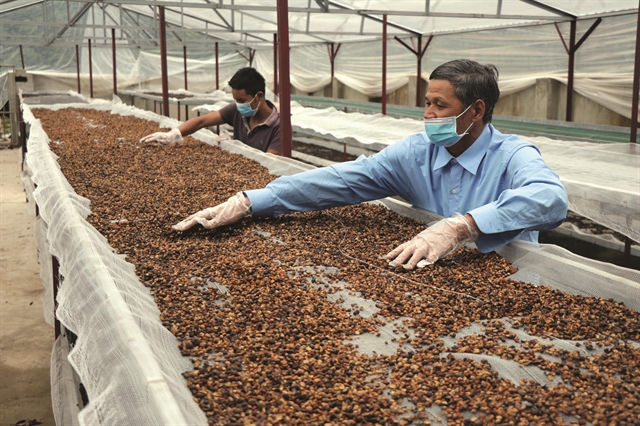 Economy
Economy


|
| Bích Thao Cooperative's coffee products in Sơn La province have met the national five-star OCOP standards. VNA/VNS Photo |
HÀ NỘI — Việt Nam exported 1.77 million tonnes of coffee of all kinds with a total turnover of over US$4 billion last year, exceeding the set target.
Coffee exports have also increased by an impressive 13.8 per cent in volume and 32 per cent in turnover compared to the whole of 2021.
The General Department of Việt Nam Customs reported that the country exported more than 197,000 tonnes of coffee, worth $425.1 million in December, increasing strongly by 53.5 per cent in volume and 39.7 per cent in value compared to November 2022.
This is the highest export volume of the coffee industry in the past four years and the highest-ever turnover value.
Over the past year, coffee exports have grown strongly thanks to a rebound in demand after the COVID-19 pandemic and high coffee prices in the context of tight global supply due to crop failures and supply chain bottlenecks in large producing countries such as Brazil and Colombia.
On the other hand, the increase in exports was also supported by an improved supply of containers and ships.
Regarding export markets, the amount of coffee exported to some main markets tends to increase last year compared to 2021, such as Russia up by 26.5 per cent, the UK by nearly 40 per cent, and especially India by 123.5 per cent.
However, a decline was recorded in markets such as the US, Japan, and China.
Meanwhile, the European Union (EU) continues to be Việt Nam's largest coffee consumption market with a market share of about 39 per cent of export volume.
Việt Nam's coffee exports to this market reached 689,049 tonnes last year, worth nearly $1.5 billion, up 25.8 per cent in volume and 45.4 per cent in value year-on-year.
Besides, the tariff advantage from the EVFTA also brings great motivation for coffee exporters to this market.
However, the biggest challenge for businesses exporting to the EU is the increasing requirements for quality and sustainability for products.
Most recently, the European Commission (EC) said that the EU had reached an agreement to ban the import of a number of products considered a key factor in promoting deforestation, including coffee, on December 6.
Along with the EU market, China's opening of its border and isolation lifting after lowering the level of COVID-19 control from January 8 is also an opportunity for Việt Nam's coffee exports to regain momentum growth in this market in the near future.
Exports at the beginning of the 2022-2023 crop year are still quite favourable, but some forecasts suggest that coffee exports may decrease this year because the supply is not as abundant as the previous year, while the price of coffee tends to decline due to the coffee supply–demand shifts from shortage to surplus.
Last year’s coffee export price recorded the highest level in many years with an average of $2,282 per tonne, a year-on-year growth of 16 per cent. — VNS




